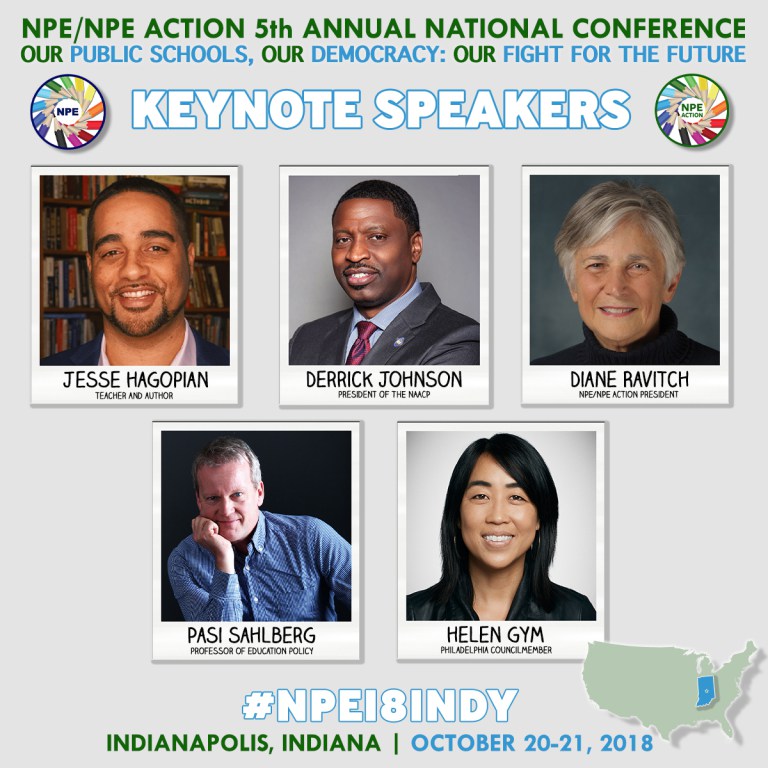I’ve been a teacher for a while now. One thing I’ve noticed is how few teachers really know what’s going on in the state of public education.
They know what’s going on in their classrooms, of course, and at their schools. They may even have a vague sense of what’s happening at the district level. But beyond that – state legislation that affects public education, who said state legislators are and what their beliefs are, federal education guidelines like ESSA and how they affect things like testing and accountability, etc. – they don’t know.
And maybe worse, they don’t know what they don’t know.
They aren’t really aware of how what is happening at the state and federal level affects them in their classrooms.
I’m not necessarily laying blame here. Ignorance is bliss, so they say. But what I’m trying to understand is why. Why don’t they know what’s happening?
It could be because they are overwhelmed. Or complacent. Or uninterested.
But many are just unaware. I know teachers – and parents – who feel frustration about things but never do anything about it. I guess it just depends on the person and how much they want things to change.

John Merrow writes about people fitting into one of four categories when it comes to knowledge about public education: The “DeVosians,” “Education Reformers,” those who don’t know or who aren’t involved, and the Progressives. I, along, with Merrow, see myself as a progressive. Not just because I’m a teacher and a parent of a public school student, but because I truly believe in the importance of a strong public school system.
As Merrow writes:
How about you? Deep down, are you a progressive? Ask yourself these simple questions.We need to change the conversation; or rather, we need to expand it. We need to engage teachers in a way that has been done recently in West Virginia and Arizona. Part of that is organizing that takes place at the union level, but the more important part occurs at the school level, in conversations during lunch or in the hallway or the parking lot. It’s getting teachers to open up and share their concerns and then showing them that we can make changes.You just need to know where to put your energy to try to change things.
1) Do you want your child or grandchild to be in schools where the adults look at each kid and wonder “How Smart Is This Child?”—and then sort them accordingly?
2) Or would you choose a school where the adults ask a different question, “How Is This Child Smart?”
3) Do you want your children or grandchildren to repeat what they have been told, or would you like them to discover things on their own, guided by the teacher?
If you opted for discovery over sorting, then you are an education progressive. Welcome! Now let’s get to work on creating a genuine paradigm shift. For that to occur, at least three things have to happen. One, we need to reject the language of ‘school reformers’ in favor of a more precise vocabulary. Two, we need to change the conversation from hackneyed terms like “learning for all” to more dynamic language like “discovery” or “knowledge production.” And, three, we must get outside our own echo chamber and engage with the 75% of the population that does not have a direct stake in schooling.
For example, at the national level, if you care about public education and want to fight against privatization and corporate reform, you can find “your people” over at the Network for Public Education. You can even attend their conference next week in Indiana (I’ll be there!). You can subscribe to Diane Ravitch’s blog, or Peter Greene’s, Steven Singer’s, or Julian Vasquez Heilig’s, or Mercedes Schneider’s. Check out the links they provide in their writings, and you’ll see there are many people out there who are fighting for public education. You can support groups like the Alliance to Reclaim our Schools. Pick an issue that you’re most frustrated about – school funding, social justice, standardized testing – and then start reading about it. If you’re a teacher, you can join the Badass Teachers Association (BATs) on Facebook and get involved in your state group.

Here in Nashville, if you’re frustrated about the lack of school funding, there are two places to focus your energy – the Metro council and the State Legislature. And there are parent groups (start here: Mid-TN CAPE) and teacher associations (join us at Tennessee Education Association) that can help.
If you’re frustrated about the way teachers are treated – the way we are overworked, stretched too thin in a million different directions with all that is asked of us, and then sorely underpaid for all of our hard work – then you need to focus your energy on the school district. Specifically, the Nashville Director of Schools Dr. Shawn Joseph and the school board. And there are groups (message me for more info) that can help with this as well.
There are movements afoot at this very moment to try to unseat the Director of Schools because of multiple offenses. There are movements underway to bring about change within our teacher associations so we can grow our membership statewide and engage teachers to get involved in the fight for public education. There are movements building statewide to engage our religious brothers and sisters in the fight to support public education.
You just need to know where to look.
And that is where teachers who are engaged – those progressives Merrow spoke about – come in. We need to be talking to teachers and parents and community members. We need to spread the word – join the Tennessee Education Association, become active in your local association, attend a training on organizing for change. Or join the Parent Advisory Committee for the school where you live. Join a Facebook group focused on saving public education. Better yet – sign up to speak at a board meeting during public comment. Find the best way you can contribute – write an op-ed for the paper, deliver a speech, help organize an event.
And of course, vote for candidates that care about public schools!
It is so easy to become frustrated with politics and all that is happening at the national level. It can be depressing and dreadful. But caring about our public schools is something that we can – and should – all get behind, no matter your political party.
Ignorance is not bliss. Be aware of the issues that affect public education. Educate yourself. Get involved.
Your voice matters. Make it heard.








